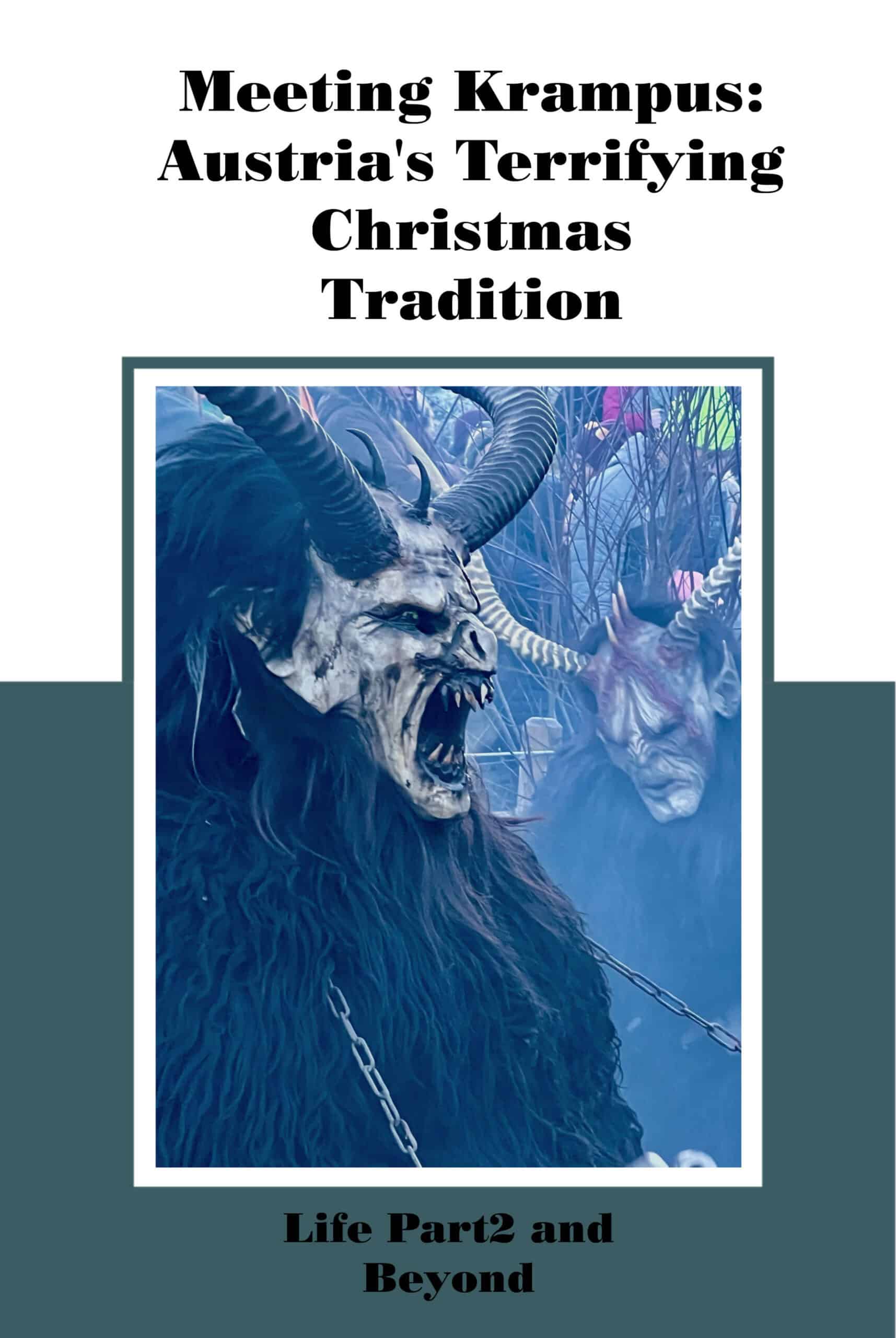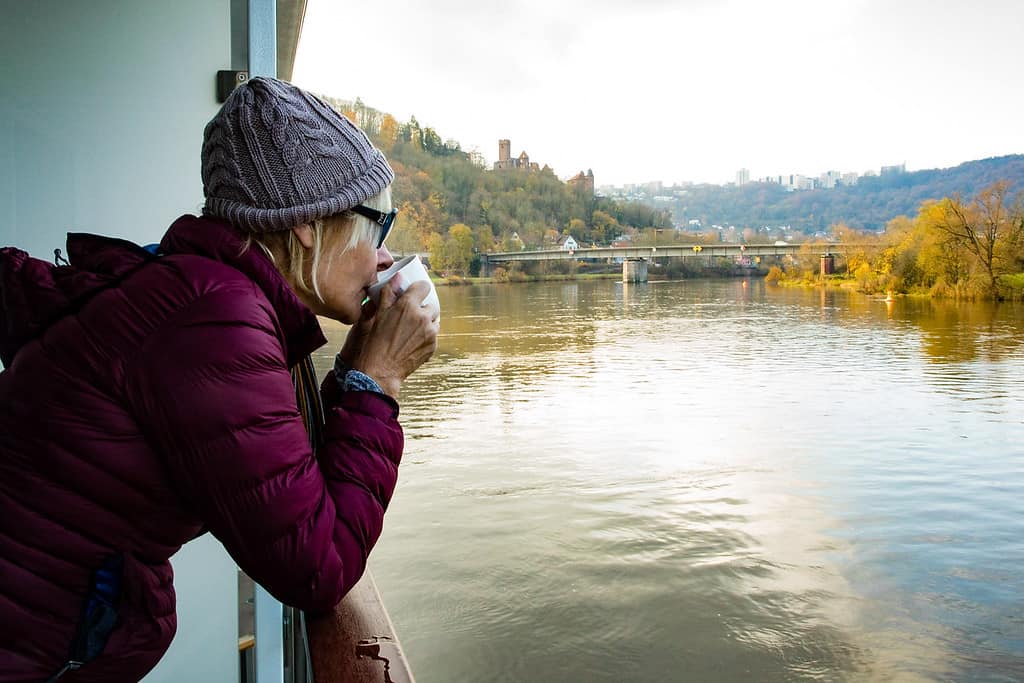Last Updated on September 11, 2025 by Sarah Wilson
House-sitting in Austria last December, I stumbled upon a sign for a family Christmas fair. Anticipating the usual festive scene of twinkling lights and carol singers, I strolled along with a sense of holiday cheer. Little did I know that I was about to be thrust into a world of horned, hairy creatures with glowing eyes and rattling chains, a sight that would both shock and fascinate me.
I had stumbled into the world of Krampus. And I can honestly say it was one of the most bizarre, yet weirdly fascinating Christmas experiences of my life.
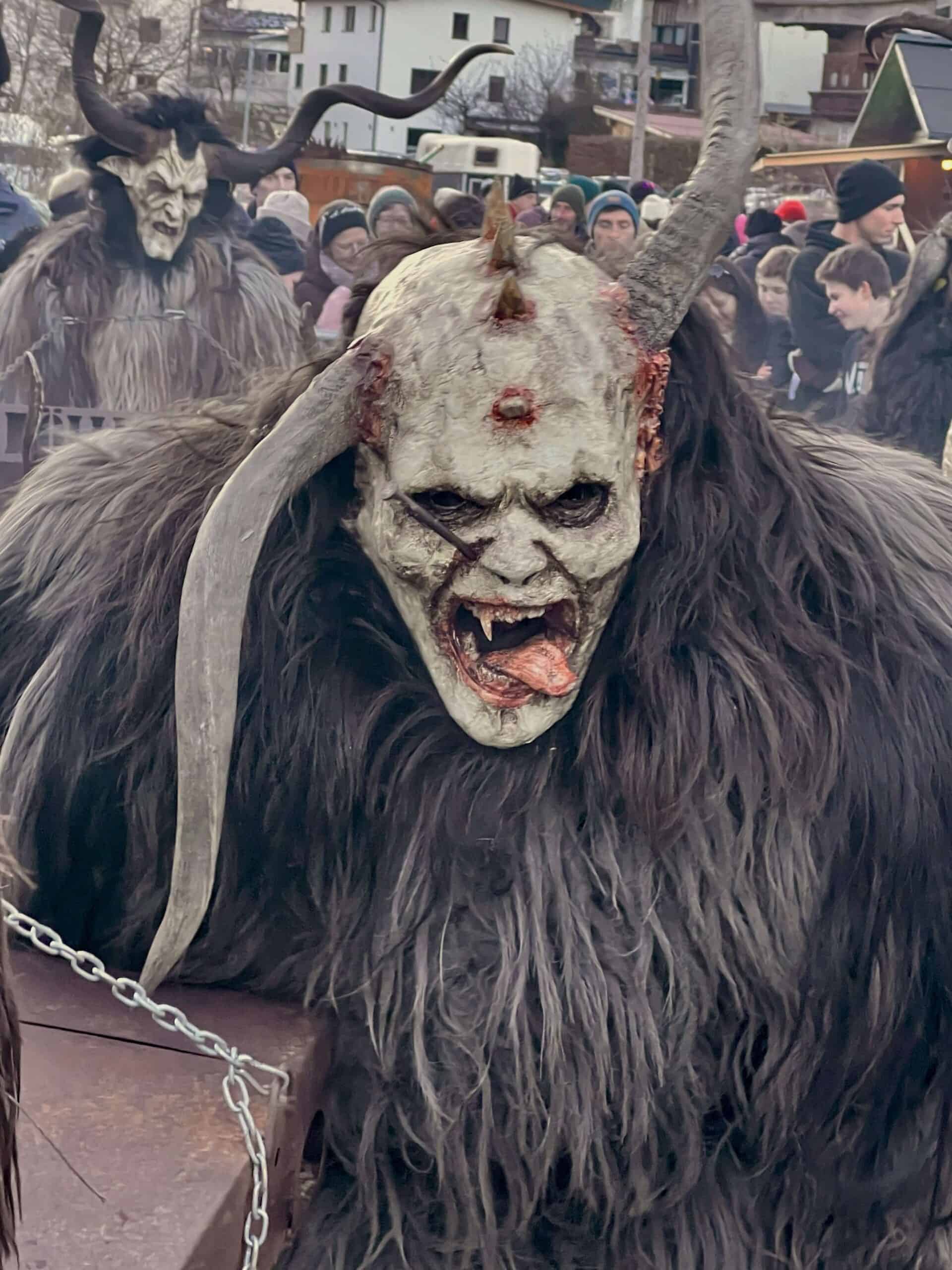
Who is Krampus?
Krampus is the dark counterpart to St. Nicholas. While good children receive sweets and gifts from St. Nicholas on 6 December (St. Nicholas Day), naughty children are said to be visited by Krampus the night before—Krampusnacht (Krampus Night) on 5 December.
This horned, half-goat, half-demon figure has been part of Alpine folklore for centuries. His role? To punish misbehaving children, he often resorted to swatting them with birch branches, rattling chains, or—according to legend—stuffing them into his sack to carry them away.
It’s a chilling reminder that Christmas in Austria isn’t all about cosy markets and gingerbread. The Krampus tradition, with its roots in pagan folklore and its evolution alongside Christian traditions, is a significant part of the country’s cultural heritage.
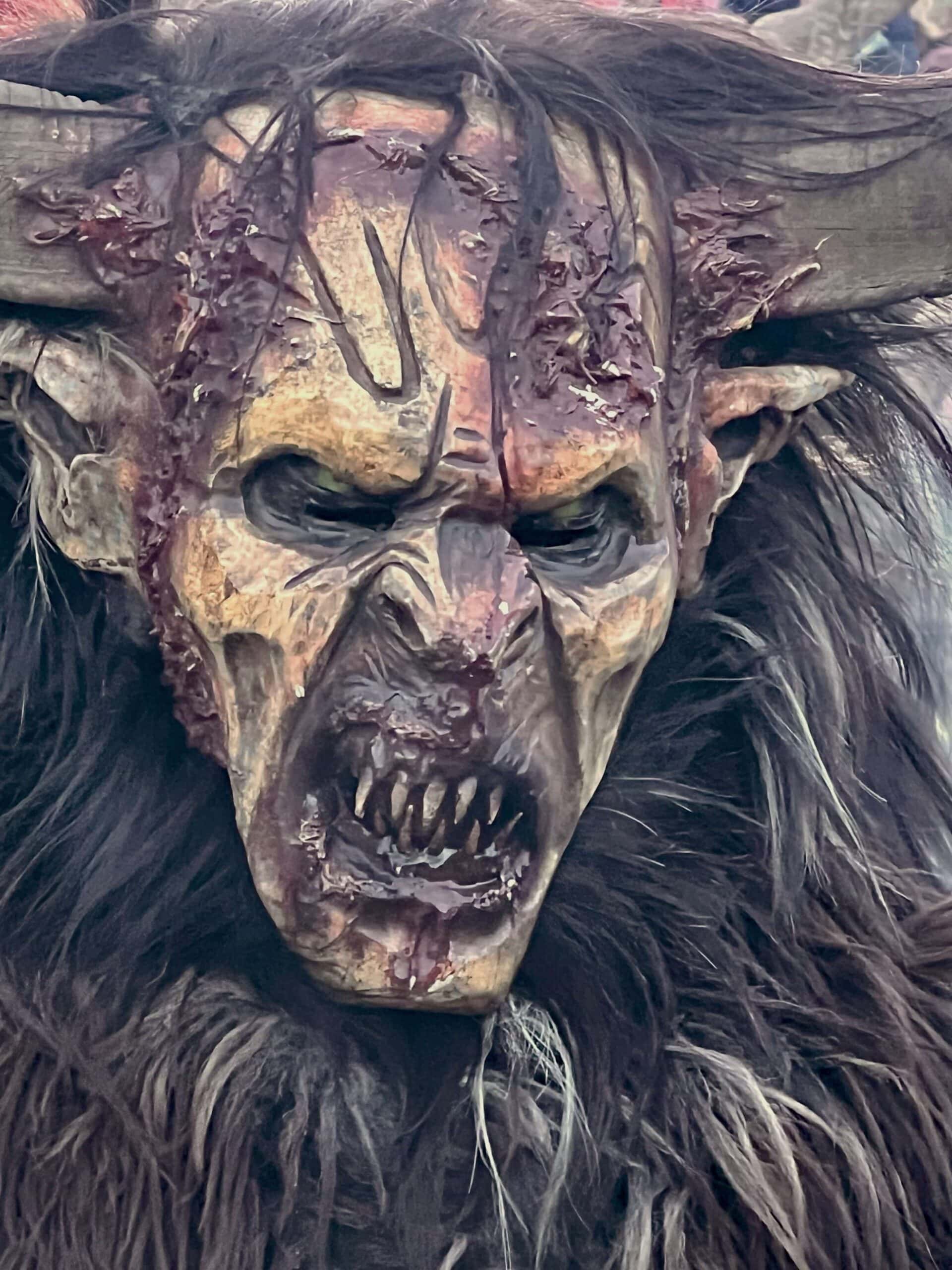
A Bit of History
The roots of Krampus stretch back long before the advent of Christianity, possibly originating from pagan winter solstice customs. Some historians suggest that he was once a part of pre-Christian rituals designed to ward off malevolent spirits. As Christianity spread across the region, Krampus was assimilated into the Christmas folklore, standing alongside St. Nicholas.
In fact, for a while, the Catholic Church tried to ban Krampus celebrations, considering him too devilish. But the tradition survived—and today, Krampus is more popular than ever, not only in Austria but across the Alpine regions of Germany, Switzerland, and northern Italy.
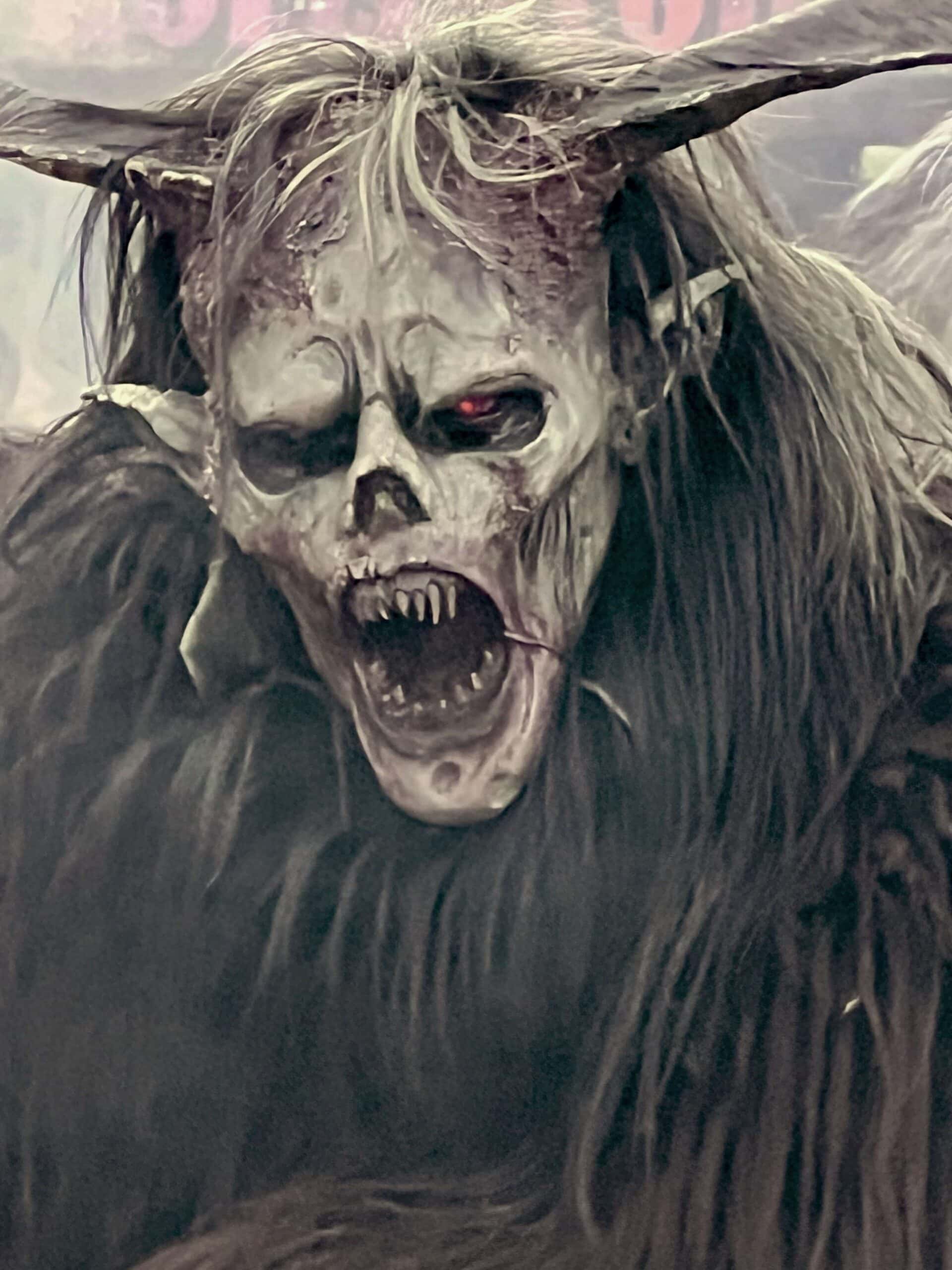
What It’s Like to See Krampus
The modern version of Krampus is less about terrifying children into good behaviour (thankfully!) and more about a wild, theatrical spectacle. Costumes are elaborate—complete with carved wooden masks, animal furs, and massive cowbells that echo through the streets.
One of the most famous events is the Krampuslauf (Krampus run), where groups of costumed Krampuses parade (or rampage) through towns. They rattle chains, leap at onlookers, and chase shrieking children and laughing adults alike.
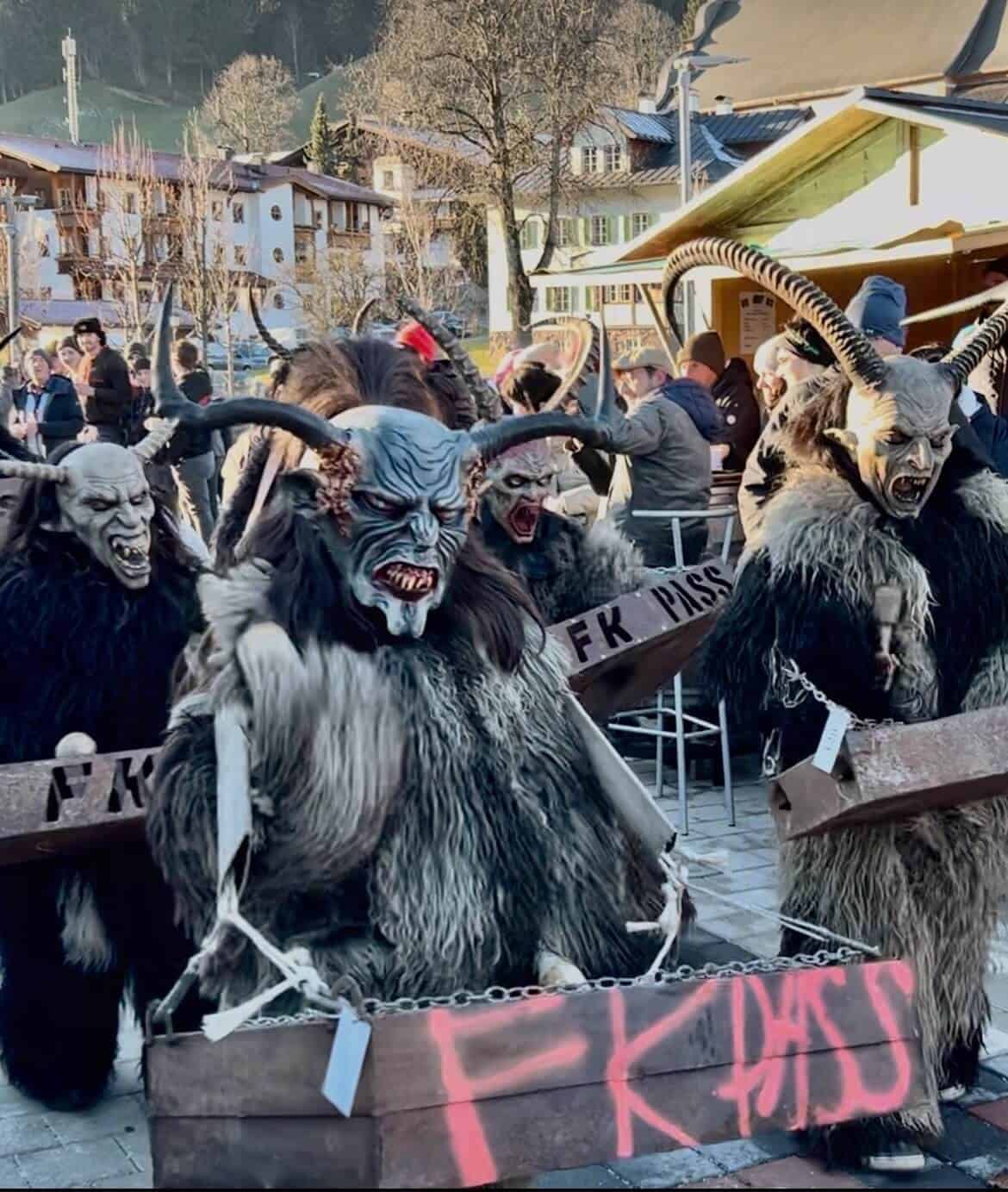
At the’ family fair’ I stumbled upon, the scene was a perfect blend of festive cheer and spine-tingling excitement. Parents sipped their Glühwein while their children, in a delightful mix of fear and laughter, fled from one Krampus to another. I clutched my hot chocolate a little tighter, fully immersed in the thrilling and somewhat scary atmosphere.
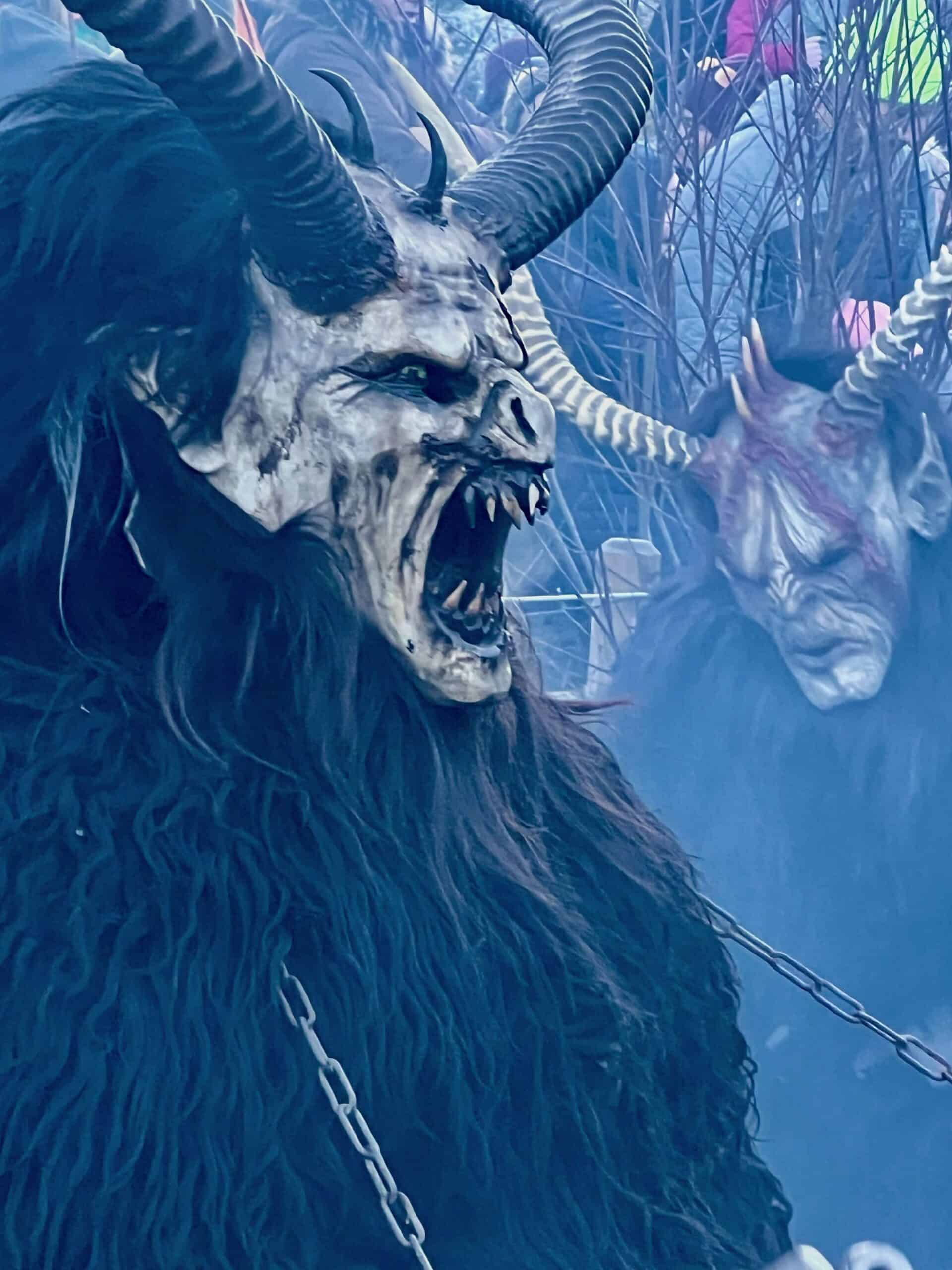
Where to See Krampus
If you’re curious—and brave—here are a few places in Austria where you can experience Krampus traditions:
Salzburg – Known for its big Krampus runs in early December.
Innsbruck – Hosts a huge Krampus parade with hundreds of performers.
Smaller Alpine villages like Rattenberg – Often the most atmospheric, where the tradition feels more local and less like a show.
Vienna – Even the capital city has Krampus events these days, with parades and markets incorporating the tradition.
If you’re visiting Austria in December, keep an eye out for posters advertising “Krampuslauf” or “Perchtenlauf”.Perchten are similar to Krampus, but they are linked to New Year’s traditions, adding another layer of Alpine winter customs to explore.

While the idea of a horned demon punishing children may sound grim, modern Krampus celebrations are more about community, heritage, and a bit of mischief. They add a thrilling edge to the otherwise cosy Christmas season, blending pagan folklore with Christian tradition in a uniquely Alpine way.
Just don’t make the mistake I did—wandering into one unprepared because nothing makes you drop your festive mug of mulled wine faster than a Krampus barreling toward you in the dark!
Pin This Post For Later
